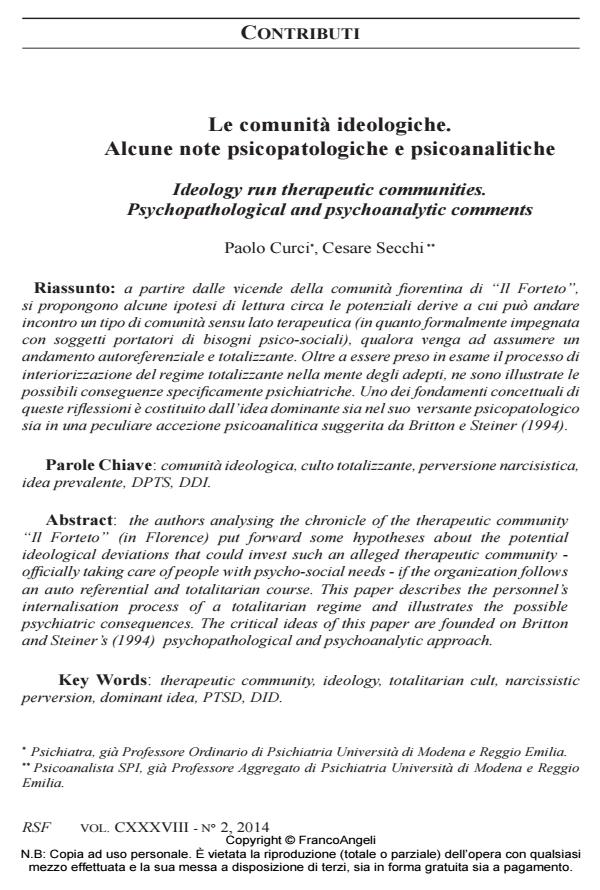Psychopathological and psychoanalytic comments
Journal title RIVISTA SPERIMENTALE DI FRENIATRIA
Author/s Paolo Curci, Cesare Secchi
Publishing Year 2014 Issue 2014/2
Language Italian Pages 24 P. 145-168 File size 1647 KB
DOI 10.3280/RSF2014-002010
DOI is like a bar code for intellectual property: to have more infomation
click here
Below, you can see the article first page
If you want to buy this article in PDF format, you can do it, following the instructions to buy download credits

FrancoAngeli is member of Publishers International Linking Association, Inc (PILA), a not-for-profit association which run the CrossRef service enabling links to and from online scholarly content.
The authors analysing the chronicle of the therapeutic community "Il Forteto" (in Florence) put forward some hypotheses about the potential ideological deviations that could invest such an alleged therapeutic community - officially taking care of people with psycho-social needs - if the organization follows an auto referential and totalitarian course. This paper describes the personnel’s internalisation process of a totalitarian regime and illustrates the possible psychiatric consequences. The critical ideas of this paper are founded on Britton and Steiner’s (1994) psychopathological and psychoanalytic approach.
Keywords: Therapeutic community, ideology, totalitarian cult, narcissistic perversion, dominant idea, PTSD, DID.
Paolo Curci, Cesare Secchi, Le comunità ideologiche. Alcune note psicopatologiche e psicoanalitiche Ideology run therapeutic communities. in "RIVISTA SPERIMENTALE DI FRENIATRIA" 2/2014, pp 145-168, DOI: 10.3280/RSF2014-002010